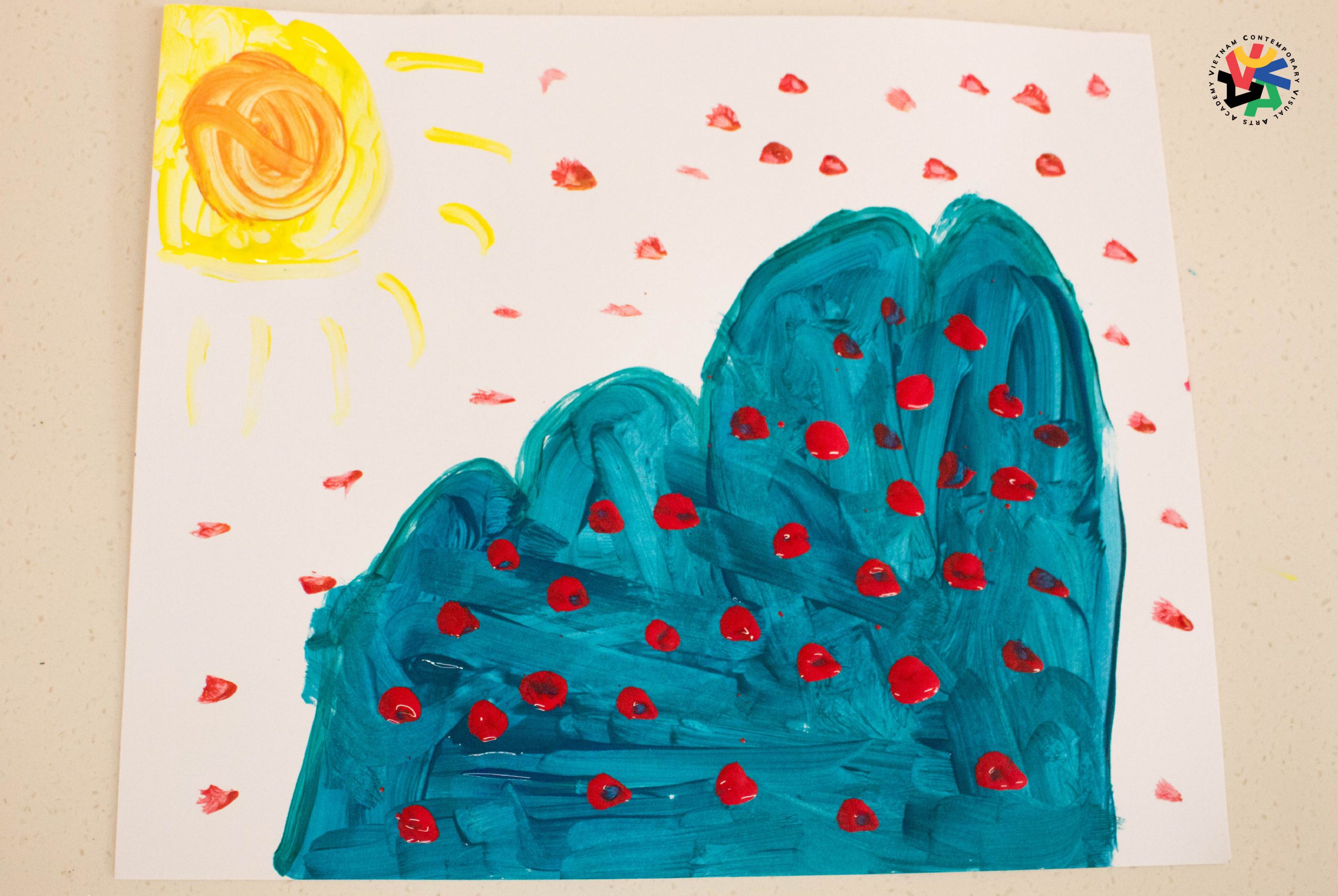DRAWING IN THE LIFE OF CHILDREN
ART AND THE CREATION OF MEANING
Children enjoy interacting with various materials, relishing the exploration of what each substance can offer and becoming adept in their utilization. Concurrently, they desire to craft completed products and create images from their experiences. These inclinations are innate in both children and adults; they manifest the human need for visual communication, to feel capable, and to understand the world around us. These interests drive individuals to establish and respond to visual images, and as children have limited knowledge of professional art, they can engage in their own hobbies directly and without constraints. Therefore, the fundamental educational purpose of artistic activities is to assist children in enhancing their ability to create meaning and understanding of themselves and the world. To achieve this goal, children’s art activities can and should be pre-planned to encompass their natural inclinations, elevate awareness of their capabilities, and allow them to immerse themselves in their experiences
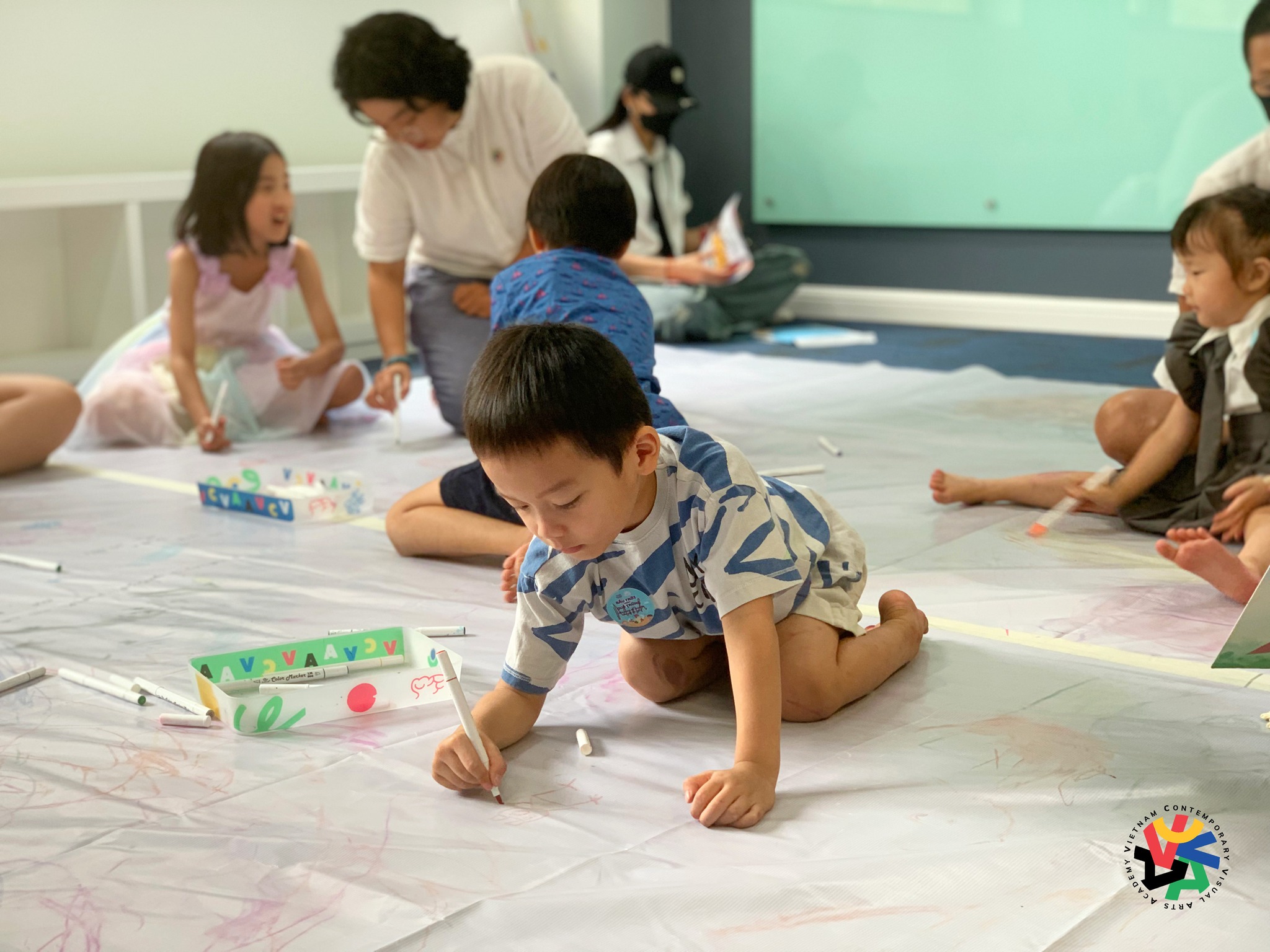
Art programs sometimes fail to fully leverage opportunities to help children develop skills and shape meaning. This occurs when activities merely scratch the surface of exploring materials and processes, neglecting to take into account the lives and interests of children. Exploration needs to be carefully designed with a structured framework and pre-planned with a proper sequence to reach a deeper understanding in children. When such structures are omitted, fundamental knowledge of art and vision is lost, turning artistic activities into superficially busy tasks. Teaching programs should be organized so that, firstly, children are supported in exploring the nature of materials deeply, and then they are assisted in using this knowledge to create meaningful images that matter to them. If the shaping process does not directly address the specific and significant experiences of children, it becomes challenging to create meaning for them. Additionally, teachers need to broaden the scope of children’s experiences as this is a crucial foundation in the arts. Teachers must have a clear awareness of the goals of activities and plan accordingly to ensure children’s artworks gain comprehensive understanding and personal satisfaction.
The objective of this book is to provide teachers with the necessary information to understand and apply practices with the perspective of shaping meaning as a goal for children’s drawing. Moreover, teachers will identify objectives, strategies, and philosophies for effectively assessing work with various materials and, more broadly, with other learning areas in the curriculum.
CHILDREN AND MATERIALS
The vibrancy and freshness in children’s drawings often captivate our interest. We sense the urge for expression hidden behind these artworks and the joy children derive from exploration and completion. However, a crucial aspect often overlooked in children’s artistic practices is the development of their understanding of visual materials.
The influence of social interactions on a developing child is frequently acknowledged. Through human interactions, children explore and construct satisfaction and meaning—elements that contribute to each individual’s completeness in the society of others; of being born as a child to parents; of having siblings and friends. It is through these human interactions that dreams, needs, and ideas are developed, met, rejected, and shared.
Interactions with materials are less emphasized. However, it is in exploring materials that children discover the ability to perceive, the satisfaction, and the meaning associated with being human in a material world: fulfillment; consequences; the transformation of forms; the harmonious properties of materials; and satisfaction as well as disappointment in their efforts to master them. Children explore, enjoy, and form ideas about the malleability of mud, the brittleness of rocks, and the invisible brilliance of light. Similar to social interactions, the use of materials has the same effect. The fascination and challenge in interaction sustain, educate, and enrich oneself. Emotional and intellectual development is built upon the increasingly complex exchanges occurring.
Through experiences with materials, children construct fundamental notions about how the material world operates and their own capacity to be efctive in that world. Initial sensory experiences lead to an understanding of the material world and basic processes in physics. Material exploration occurs even when children experiment with pots and pans in the kitchen, with a stick on the ground—or artistic materials. The world is filled with materials, and as children become acquainted with one material, it leads them to others. They not only learn specific natural properties of each material but also grasp fundamental principles about the material world.fe
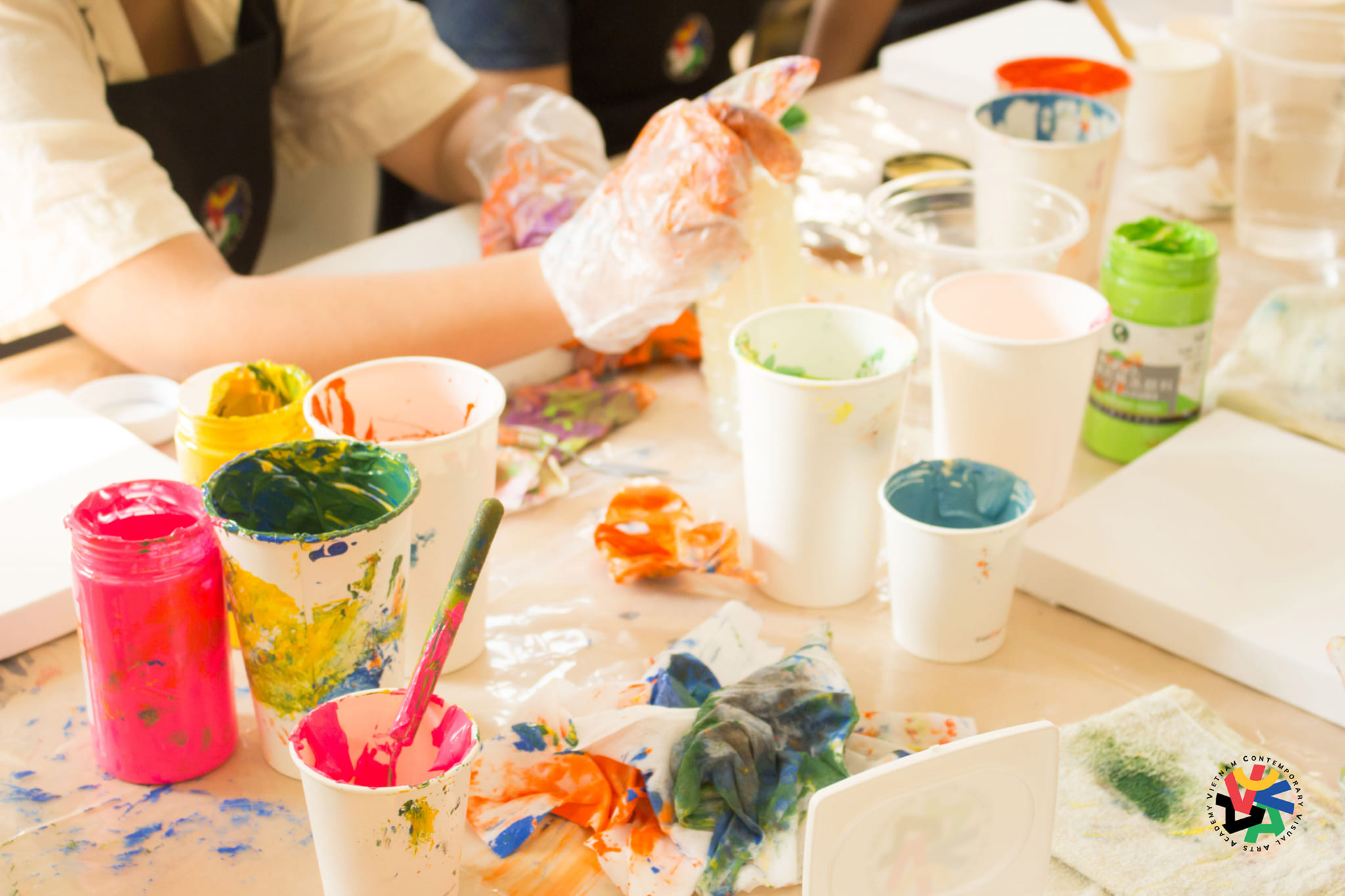
Newborns gently tap their hands on the textured surface of a blanket, water, oatmeal, or even their mother’s nose. Toddlers practice filling and pulling everything within reach: cooking utensils, rocks, books, dolls, and blankets. Preschoolers choose and arrange blocks, puzzle pieces, chairs, buttons, and lines drawn on paper. Gentle tapping and touching progress to filling and pulling, then advance to sorting and arranging.
Many materials that children interact with are beneficial for their self-development in forming images or imaginations. Children quickly recognize these capabilities and skillfully utilize them. For children, the space under the dining table becomes a home; a stick becomes an airplane. Children use materials in their original form, combine or arrange them, and apply them to create new forms. The space under the table is still there but becomes more like a real house with an added blanket along the table’s edge. A stick just needs to “fly.” Chairs are stacked in a row to become a bus, while clay is flattened to create a dual-layered cake.
Poster paint is used as a material for children due to its flexibility, visual appeal, and distinct bright colors. Because of these characteristics, children can easily apply and explore basic art concepts more effortlessly with poster paint. For example, the effect of one color on another in mixing can be clearly observed, or the direct relationship between body movement and the line can be vividly expressed as a child presses their arm onto a color patch or shakes it across a wavy line. Poster paint is suitable for exploring principles of composition such as repetition, diversity, and ultimately understanding the representative correlation between a drawn shape and a real object. Poster paint also has the potential to create considerable subtlety in color intensity, texture, and diverse lines when used by older children; in fact, it is a good medium for high school students. Therefore, it is suitable for young children to build a foundation for more practical practices later on. It is an appropriate medium for children to engage in for an extended period during their early educational years, helping them achieve greater depth and expressive ability in creating meaning.
DEVELOPMENT OF DRAWING ABILITIES
An overview of children’s drawing abilities in this section describes the developmental process, illustrating how each early stage serves as a foundation for the subsequent stage. The discussions on development are presented in more detail and relevance in parts II, III, and IV, focusing on practical aspects.
The principle that each knowledge comes from preceding knowledge is evident from the outset. For a child to begin developing drawing skills, they need to build concepts about tools and how to use them effectively, creating conditions for using brushes in a specific and specialized way. As children start occasionally drawing around the age of two or three, this ability needs to be well-established for the child to dip the brush into paint and control their movements on paper. Subsequently, each step in the drawing development is primarily seen as a result of interacting with the act of painting. From initial simple applications, children learn visual concepts and begin using them deliberately and with a higher scope and flexibility. The response of colors to more complex applications demonstrates new, more sophisticated abilities, making the learning process a dialogue between the characteristics of colors and the child’s evolving mind.
As drawing progresses, children use three different thinking methods. In the first stage, the features of visual artistic elements – lines, shapes, colors, and space on paper – are absorbed. Then, in the second stage, children can use symbolic representation using expressive and thoughtful emotional thinking. In the third stage, children become adept at presentation, using organized means to create increasingly complex images of their experiences in life. Therefore, the child’s concepts of painting, design, and composition are built upon one another. In each stage, there are significant changes between the preceding and subsequent thinking methods that need to be recognized. The main stages and significant changes within them will be presented in the following sections.
ENGAGING WITH ELEMENTS
Motion and Their Imprints – Ages 1.5, 2, 3
Fundamentally, children commence drawing in much the same way, whether they are one and a half or three years old. Initially, their thinking predominantly focuses on kinesthetic sensations – the sense of body and movement. Arms and bodies “dance” around and above the paper following repetitive and reflex-like motions. The imprints of these actions – dots, horizontal lines, squiggly lines, and circular patterns – leave a strong impression on the eyes and kickstart the child’s educative journey in visual language. The continuous movement, direction of lines, the covering nature of the shape’s surface, the ability to alter color through blending, and the space on a sheet of paper as a canvas all pave the way for the child to start absorbing and utilizing them.
Exploring Lines, Shapes, and Colors – Ages 3, 4, 5
As the coordination between a child’s movement and vision increases, and their visual concepts become more distinct, children begin drawing pictures that demonstrate their understanding of how lines can have specific lengths, be oriented on paper, and how changing their direction alters the way a child moves across the paper. They start placing color patches in distinct locations and experiment with various circular shapes. Now, children consciously keep their colors pure or mix them. They draw pictures, experimenting with the repetition and transformation of lines, shapes, spatial positions, and colors. In summary, children now have a comprehensive understanding of the basic visual-artistic elements to produce specific and diverse results.
Sketching – Ages 4, 5, 6
Once children have enough experience with coloring to develop concepts about basic elements, including the concept of paper space as a continuous surface with parts above, below, in between, sides, and edges, they can begin practicing the meticulous combination of lines, shapes, and colors to create characteristic patterns and sketches typical for this age group. They can cover the entire sheet with distinct colored lines and shapes arranged to form an interesting, organized whole.
Thus, the early-stage muscle movements can shape concepts of visual-artistic elements in the second stage, aiding the feasible coordination of these elements in the sketching phase of the third stage.
EARLY SYMBOLIC DRAWINGS
Naming Shapes and Symbols from Sketches – Ages 2, 3, 4, 5
This stage signifies a transition towards presentation. It begins as many children create marks and continues sporadically as they absorb concepts of visual-artistic elements. In the second or third year, children begin to recognize similarities between the movement, emotional qualities, and spatial relationships of the drawn figures with objects and events in the real world. However, these moments of awareness are fleeting and not a significant part of a child’s effort. An object is found to resemble a drawn figure and is then “named” (Lowenfeld 1947); hence, there are many inconsistent and whimsical themes: roads, ropes, eagles, windows, submarines, babies, snails, raincoats, “a crocodile with a bone inside,” “a panting elephant,” or “Tarzan building his house”
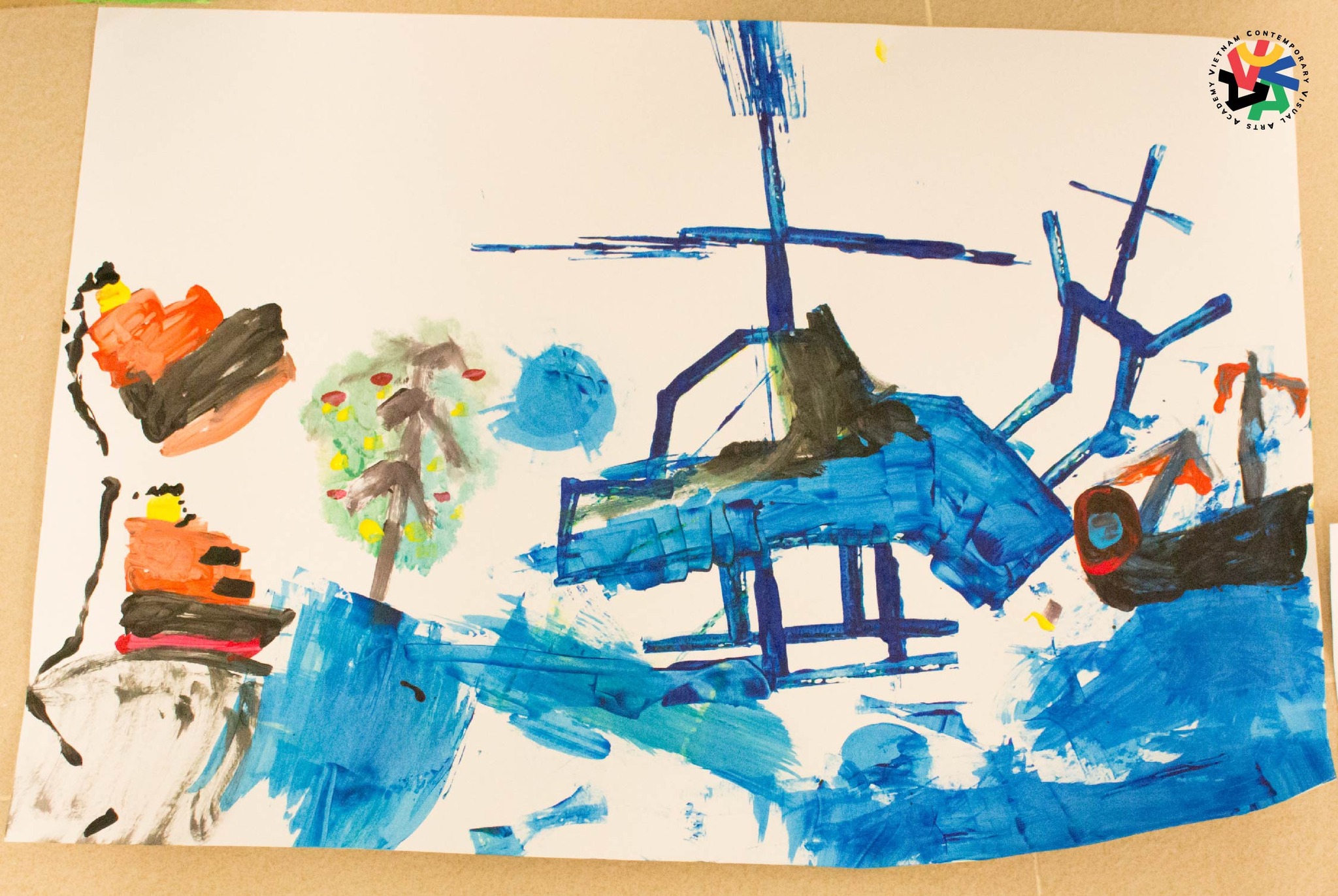
In the next step, children modify the “sketch in progress” to fit the “found object,” and finally, they choose a theme before drawing. Then they practice most often with symbols based on the sketches they have done several times before. For example, typical drawings of people at this stage are a circle or perhaps two circles with inner circles for facial features and lines radiating out for arms and legs. This is a variation of a favorite sketch in which a circle is adorned with inner circles and lines along its edges. Although created purposefully, with a theme in mind, the form of the symbol originates more from design elements than from thoughts about the subject.
Therefore, the ability to present depends on constructing concepts of visual-artistic elements and sketches.
IMAGINARY EXPERIENCE
Now children choose a deliberate way to create a design or to depict their experiences. They will continue drawing designs throughout their school years, but the driving force behind their artistic activities from this point onward will be images depicting objects and events in life. They choose subjects to draw purposefully, from memories of experiences with new perspectives formed about representation, symbolism, and following their new definitions of what makes a picture.
By the age of five or six, children understand that pictures, excluding abstract drawings, are descriptions of their interests and activities. The impulse to tell stories is strong, and the need to “tell stories” through drawings is a powerful motivator. Then, as children’s understanding of the world becomes more complex, they perceive the need to express these more nuanced aspects. They feel obligated to draw pictures that combine more information and discover new ways to present it. Thus, the impulse to describe drives the development of their presentation and expression abilities. While the need for mastering the medium predominates in the early developmental stage and exploration of presentation is the focus of the second stage, the need for describing and recording events dominates the third stage. In this final stage, three distinct phases will be outlined in the following sections.
SIMPLE IMAGES: PEOPLE, HOUSES, ANIMALS – AGES 5, 6, 7
With the emergence of more logical thinking in the fifth and sixth years, the thematic scope of children’s drawings becomes more organized and significantly narrows compared to the seemingly random range of themes before. Modifying their previous designs, children reach the point of using symbols with simple geometric shapes to develop their distinctive methods to present basic objects. As these pictures are drawn without details about gender, age, or ethnicity, it seems like children are describing their perception of the major characteristics of the objects. For example, the depiction of people is gender-neutral, ageless, and profession-neutral. Later in this stage, after establishing symbols for basic objects, children move on to describing “more specific subcategories” (e.g., boy and girl) by adding more attributes to their basic images. For instance, the image of a person as a female is enhanced by adding lines for a dress and long hair.
Children combine these images into scenes. Typical drawings include one or more shapes on a baseline with selected objects added to explain whether the scene is outdoors (trees, sun, sky) or indoors (chairs, windows, tables). Children’s drawings at this stage are also characterized by the personal nature of the depicted events; the subject is the artist, the artist’s family, and everyday experiences like “playing in the park.”
The ability to create these images depends on children’s exploration of visual-artistic elements and the ability of these elements to represent objects and events in the real world. These discoveries, made alongside the increasingly developed logical thinking of children, now help them express in an organized and systematic way about similar everyday things.
RICH IMAGERY: FRIENDS, WORKERS, STREETS – AGES 7, 8, 9
The diversity of themes increases as the child’s emerging social interests drive their focus towards friendship, organized sports, work, and adult responsibilities. Drawings depict places further away as children explore beyond their homes, partly due to their growing ability to understand events indirectly experienced through books, movies, and television. Stories about Eskimos in distant lands and TV coverage of the Olympic sports vividly capture their imagination and become subjects of their drawings. Individual objects, as well as genres or categories, are depicted, and as children mature and can form concepts of more complex entities, their drawings become more sophisticated, narratively rich, and detailed.
Driven by a desire to capture more information and unburdened by scene-setting rules, children freely combine perspectives, inventing methods to represent whatever they wish. This freedom leads them to view the entire sheet of paper as a complete spatial unit, flat yet not contradictory to the child’s holistic experience.
Metaphor and Style: A Wolf’s Den, a Cat on a Cushion – Ages 9, 10, 11
In this preadolescent stage, children begin to use visual images as symbols or metaphors for emotions or concepts. For instance, a drawing of a cat on a cushion may symbolize the safety and warmth of domesticity, while a depiction of a wolf mother and cubs represents a contradictory image of nurturing and aggression. Children are starting to become aware that images can relate to abstract entities.
Ideas about paintings with specific stylistic limitations are also developing. Children begin to self-impose limits on color ranges or specific characteristics of shapes, such as using simple circles for indoor scenes of a cat on a cushion. Techniques like using lines to create texture and coloring to cast shadows on a drawing become intriguing to them in essence. Their curiosity about graphic conventions widely accepted, such as those in cartoons and illustrations, is growing; these visual styles are easily recognizable and tell clear, emotionally satisfying stories to children at this age.
Children start using cross-hatching at edges to depict the object’s volume. They learn to use these lines from observing adults without fully understanding the related principles; hence, the reliability of these lines in portraying volume is lacking, but it demonstrates children’s increasingly sophisticated awareness of visual conventions (observation). Their acknowledgment of the impact of perspective on an image, reflected in their preference for drawing unusual perspectives like through a keyhole, a spyglass, or a specific window, leads to a deeper understanding or viewpoint.
In the later years of adolescence, children become more interested in the art of the cultural context they belong to, wanting to explore more techniques from that culture. The preceding stage marks the peak of forming meaning using the basic visual language of childhood, transitioning to a focus on the artistic forms of their cultural context.
The entire process of progressing through the development of the ability to visualize complex life experiences occurs from the age of two until eleven, provided children are given ample opportunities to work with drawing. Similar developmental patterns can occur in a shorter timeframe if older children begin working with drawing for the first time. Similarly, this developmental sequence can be revisited when children have had an extended break from drawing, missed some essential hands-on activities with materials, or are feeling emotionally disoriented. All children, regardless of age, lack of experience, re-entry after an absence, or emotional confusion, need time to explore the basic characteristics of any material.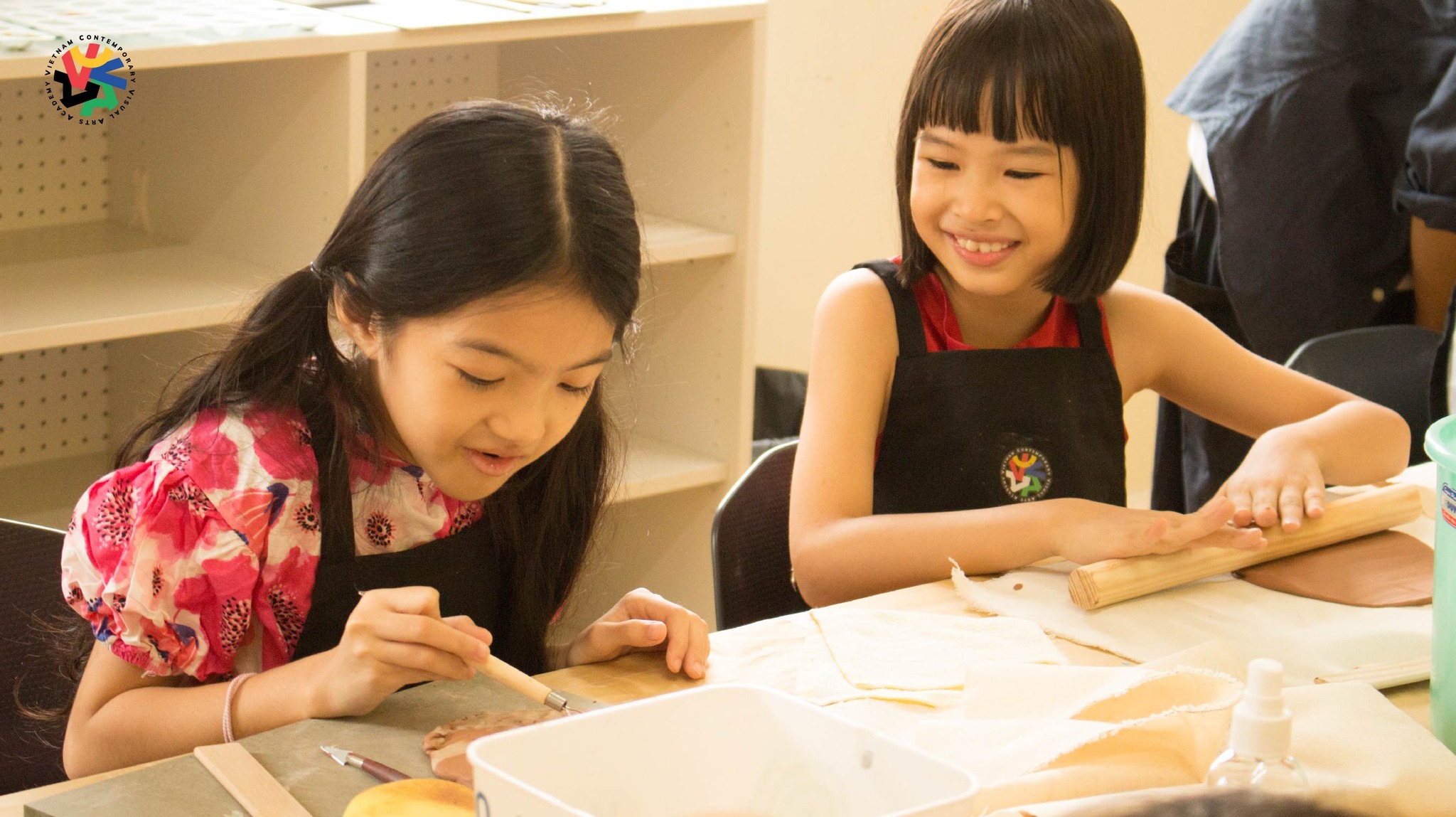
Older children may spend a few minutes mixing colors like younger children before they “sense” the material in their hands and minds enough to transition to creatively forming images with it. Unsettled children may need to create some exploratory paintings before moving on to their usual images.
When children have missed out on early drawing experiences, they express this to the teacher in various ways. They may fear freedom with drawing; they may lack control over coloring, or they may prefer using their drawing time to swirl brushes in water or mix a tray full of colors without applying them to paper. When this happens, teachers should help children focus on initial developmental goals, such as color mixing. Later, teachers may want to give all children opportunities to express such needs through lessons in previous stages.
Teachers need to assist children through these stages when they are ready. Often, it’s challenging to determine the right time to begin this process. A good sign is when children feel bored and seem uninterested or purposeless in the practice they have chosen or when they are stuck in mindless repetition. Then, teachers can suggest a change by offering a lesson related to the next stage. If children are ready, they will respond; if not, they will skip it. Teachers should never try to “push” children through this developmental process because the hasty experience of each stage becomes a shaky foundation for further development. Once a proper foundation is laid, children will smoothly transition to stages that align with their development.
AESTHETIC VALUE IN CHILDREN’S ART
Drawings differ from other scientific communication methods in that their meanings are guided by the expressive nature of visual-artistic elements organized within them. The way a tree is drawn— the lines, shapes, and colors chosen by the artist— communicates meaning alongside indicating the presence of a tree in the scene. Visual-artistic elements often convey movement and/or emotional qualities such as upward or energetic, stagnant or tranquil, heavy or stable. In addition to conveying simple meanings as individual visual elements, how these elements are combined into a whole also conveys meaning.
In general, an artist’s images express three different types of meaning, intricately interwoven into a unified organization. First, there is a narrative thread: What idea or “story” is being presented? This narrative thread emerges whether the picture is specific or abstract, as adult abstract drawings convey concepts entirely through lines, shapes, and colors (for example, the expression of serenity through contrasting forms in drawings, not following the regular arrangement, as seen in many Mondrian paintings). There is also an emotional thread: What emotions are conveyed through narration and by visual-artistic elements? And, there is a compositional thread: What kind of visual attraction and coherence is created by the arrangement of active elements, lines, shapes, and colors? The overall organization should weave these threads into a cohesive whole and convey a clear meaning.
The aesthetic value of a picture is often determined by evaluating the nature of meaning and organization in each component thread and as a whole. For example, as part of the story of some of Cezanne’s outstanding paintings about Mont Sainte-Victoire, he described the rugged mountain outside a peaceful, lush landscape, and he drew the pathways of a tree in close space, thus firmly placing the viewer at a close-up point and at a distance from the mountain. He brought emotional resonance to these scenes by using dashed lines, shapes, and bright, vibrant colors to enhance the power of the drawings within the landscape and the delight of bright light. In sketching compositions, he created tension between contrasting properties, as powerful movements into contrasting space contrasted with stable movements vertically and horizontally. The overall effectiveness of these contrasts in self-nature, emotion, and composition makes the viewer confront an image full of emotion and brilliance in the tension between the power and tranquility of nature (and art).
Is it appropriate – or helpful – to look at children’s art in this way?
At first glance, it may seem that organizing these threads into a harmonious whole is a too complex task for children. Research on the development of children’s drawing shows that their drawings rely on a few ideas, and their ability to organize these ideas develops slowly. However, it also shows that children’s images convey emotions and efforts for unity. In fact, the ability to integrate storytelling, emotions, and composition into their drawings surpasses that of most adults because these threads have not yet become separate.
The emotional qualities conveyed by the self-expressive visual elements are evident to children, who are innately attuned to these expressive characteristics. They perceive lines jumping on paper enthusiastically, or a color emitting a loud sound. Additionally, when children begin to explore performance for the first time, these expressive characteristics, along with a few very simple spatial attributes, become the foundation they use for description. The enormous size of an elephant might be created by a group of curved circles expanding rather than a line outlining. In this descriptive method, expansion is equivalent to bulging – there is no separation between content and the means of expression. Finally, children begin to feel the need for composition, selection, and arrangement of visual elements to create simple genres in order and interest, first abstract paintings, and then realistic paintings. Therefore, despite the simplicity of children’s storytelling methods and organization, they can and do create meaning and aesthetic order in their paintings. It would be helpful to recognize their works in this framework.
At the same time, children practice these aesthetic understandings within developmental limits, and adults must learn to recognize meaning classifications and organizations appropriate for each stage in the child’s developmental sequence. To do this, it is crucial to carefully study the artistic process for children (as we will practice in the following sections) and monitor the creative journey of each child in each individual painting and through series of paintings. The child’s purpose, focal interests, and the scope of technical means and concepts they use can be determined. Then, questions can be asked: Within their abilities and intentions, have they used relationships to create diversity and unity? Based on this assessment, teachers can respond to the child’s aesthetic capabilities.
As children develop more organized thinking skills and become more influenced by adult concepts, form and content become more distinct for them. In the years from six to eight, they seem primarily interested in content, consciously focusing their efforts on “telling the story” and often not intentionally using expressive qualities to depict emotional characteristics, although the themes they choose are meaningful to them. A visit to the dentist can be adorned as brightly as a visit to grandma. However, even during this time, they can respond with understanding and interest to questions and suggestions about the expression and organization of a drawing. Then, when the separation of the two threads of form and content is clearly established, from the age of eight to ten, they begin to create purposeful relationships between form and content by consciously using the expressive characteristics of visual elements in a more diverse and sophisticated manner. For example, they consciously use darker tones to evoke a somber mood or intentionally use very graceful and elegant lines to convey sophistication.
In Western thought, there has been a clear separation between reason and emotion. However, despite adults’ attempts to be as objective as possible, both reason and emotion are intertwined in our thoughts. Drawing and other art forms acknowledge and celebrate this interdependence rather than overlooking it. In adult art, there is a balance between reason and emotion, recognizing the necessity of each and forming a relationship between them through the establishment of connections between form and content. The strong characteristics of lines and shapes in Cezanne’s landscapes convey the artist’s emotions about the scenery and his belief in the importance of the compositional structure of paintings. The origin of this relationship can be found in the combination of a child’s thoughts and emotions and their perception of expressive qualities in both objects and active configurations.
The differentiation of thought and emotion in a picture occurs within the same combined, separated, and reunited pattern that we observe regarding form and content. For four- to five-year-olds, theme and mood are one. By six or seven years old, emotions related to dominant elements of the story can be literally described; outstretched arms are longer, significant figures are larger, and a new dress is more elaborately decorated. These are literal expressions within the picture and differ from emotional qualities conveyed by using lines, shapes, and colors. In adolescence, children begin to imagine emotions as themes within and of themselves. Images of a solitary character titled “Loneliness” or two characters “Friendship” emerge. Ultimately, thoughts and emotions, having been separated, can be purposefully combined through the relationships of expressive characteristics in material to the theme.
Furthermore, it is important to note that expressing emotions with little or no organizational effort does not contribute to aesthetic, artistic activity over time. It does not establish connections between thought and emotion or between form and content. It also does not, if continued, contribute to the well-being of the child because conflict resolution and clarification are not found through such work.
Behind the third organizational style, the component of visual elements, is the innate human desire for order. All methods of creating order do so by forming systematic relationships between arranged objects or events. Any artist chooses and arranges lines, shapes, and colors to create a sense of order and unity. Children primarily create order by using the repetition and variation of active elements. The child’s ability to organize elements develops naturally. A three-year-old repeats similar lines and shapes stacked on top of each other on paper, creating order unintentionally. Next, a similar dispersal forms lines and shapes across the paper. Then, the child can still place different elements in similar positions on the paper. Finally, aesthetically pleasing sketches for four- and five-year-olds are based on similarities and differences in lines, shapes, colors, and positions. Subsequently, in realistic paintings, children arrange these elements to describe objects and events as well as to achieve interesting and unified compositions.
One final caution. Because works for children seem fresh and spontaneous, they are often misunderstood by writers and artists. This freshness is interpreted as if children have the same art skills, motivation, and knowledge as adults. However, ideas about the cultural and societal aspects of art do not exist for young children. Children do not have preconceptions about art to achieve freedom; rather, children lack such ideas. The child’s effort is to control fragments of sensations, emotions, and ideas; thus, what appears direct and spontaneous to an adult is the result of developing mastery over the medium in part of the child.
Children’s works relate to adult art in a simple but profound way. In them, the basic principles of art are revealed in a pure and simple form. In them, we can trace the basic characteristics of art back to their psychological origins. For example, motion is an inherent attribute of a line; speed and direction are its essence. In children’s art, lines begin almost as an accidental residue of motion. Similarly, rhythm is an inherent attribute no less than the repetition of images. It appears in the first gestures that a child makes. These characteristics of form, motion, and rhythm are fundamental in human perception, and children begin to understand and use them in art when they are very young. In these examples and many others, works for children reveal the basic foundations of art, foundations that originate from the physical nature of the medium, in human perception and emotion, and exist regardless of the extensive history of transformations.
Just as we should not consider children’s works as the result of a particularly notable artistic spontaneity in children, we should not regard them as failed works of adults. Considering children’s art as illogical and chaotic misunderstands the difference between children’s art and fine art and ignores the developmental process of art that takes place in children. Children start with no concept of basic visual elements, creating images, a complete product, or art as a means of communication. Through trial and error, children must build an understanding of each of these basic aspects of art. Each stage of this experimentation produces its own purpose, skills, organizational systems, and appropriate images. Our task is to understand the child’s thinking and purpose—and assess the artwork accordingly. In fact, we will see in the following chapters that an understanding of a child’s cognitive perceptions helps teachers determine the process to start drawing sessions, to provide feedback to the child, and ultimately to evaluate the child’s progress.
